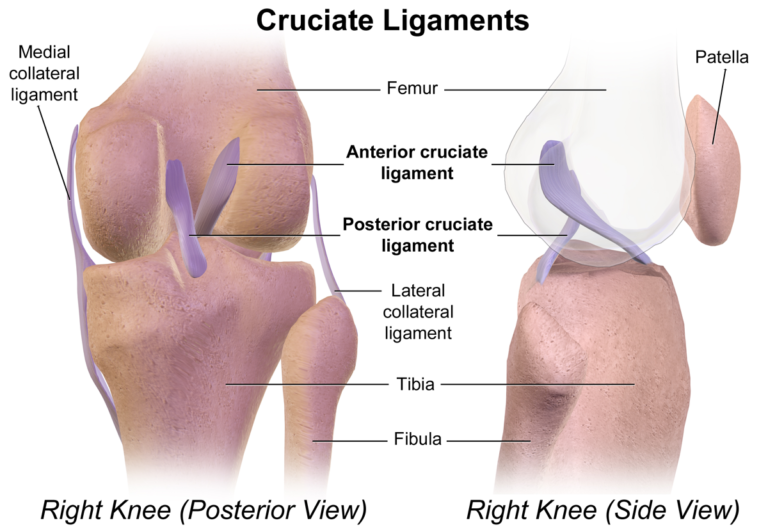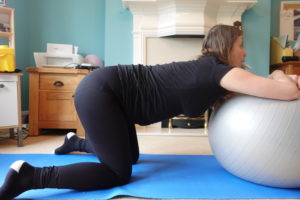What is the function of the cruciate ligaments?
There are two cruciates ligaments in the knee: the Anterior Cruciate Ligament (ACL) and the second the Posterior Cruciate Ligament (PCL).
These two ligaments cross forward and laterally between the femur and the tibia. Their role is to maintain knee stability, especially with “drawer” movements (sliding of the femur on the tibia backward and forward) or when twisting.
When one of these ligaments tears it causes knee instability. This instability in turn lead to apprehension when performing certain movements, but also pain.
A bad or untreated cruciate ligament tear can lead to more serious injury such as complete ligament tear or meniscal injury.

How a cruciate ligament can tear?
The Anterior Cruciate ligament is the one most commonly affected. In a majority of cases during sports activities:
- Poor landing on a bent knee (Basketball)
- Forced movement on a flexed and twisted knee (Ski)
- Poor reception on a hyperextended knee (Kicking in Football)
- or during a direct impact on the knee (ex: martial arts)
It is less common to tear the Posterior Cruciate Ligament. It is said to be twice as strong as the ACL. However, PCL tear do occur like in road accident or during a direct front-to-back impact on a bent knee or during a hyperextension movement under load.
How do I know if I tear my Anterior Cruciate ligament?
Firstly, there are some acute signs suggestif of a potential anterior cruciate ligament tear:
- Cracking sensation
- Sharp pain
- Swelling of the knee
- Difficulty getting up and walking
If you experience any of these symptoms, or in any doubt, a Sport Physiotherapist will perform a full office examination of your knee to find out which structures are affected and to what degree.
Finally, following our examination, we will know if you should be referred for an MRI. This is the most reliable way to confirm our diagnosis and also to know if other structures are affected.
Depending on the results, we will discuss together the best course of action for your rehabilitation.
Is surgery always necessary after an Anterior Cruciate Ligament tear?
No, the surgery is not mandatory. In the case of partial tears, conservative treatment will be enough to resume a normal life an physical activity, without discomfort.
In the case of total ACL rupture, conservative treatment may also be sufficient, but this will depend on several criteria:
- Your age
- Type of physical activity
- The pace and intensity of this activity
- Your upcoming projects
We will discuss together and with your surgeon the merits of a surgery.
What are the possible treatments for an Anteriorir Cruciate Ligament Tear?
There are two main treatment options for an Anterior Cruciate Ligament: conservative treatment or surgical treatment.
Conservative Treatment: rehabilitation will mainly consist in strengthening the stability of the knee through muscular and proprioceptive exercises (= balance).
Surgical Treatment: There are different types of surgery, it will depend on your surgeon. Usually, the operation involves replacing the cruciate ligament with part of the muscle tendons located around the periphery of your knee.
Starting rehabilitation before the surgery is recommanded to improve postoperative recovery. Exercises program will maintain or restore range of motion and muscle strength.
We will continue to rehabilitate your knee immediately after the surgery.
Knee Rehabilitation after a Cruciate Liagment Tear or a Surgery:
1st phase:
- Fight against edema
- Gain range of motion (flexion and extension)
- Strengthen the quadriceps to regain knee lock when walking.
2nd phase:
- Walk without crutch
- General strengthening of the knee progressive
- Obtain full amplitudes
3rd phase
- Gradual return to sport
In the event of a rupture of the PCL, treatment will generally be conservative.
In the event of a partial tear of the ACL, but it can also be surgical in some exeption.
Here is an example of a specific strengthening and stability exercise use during a knee rehabilitation:



